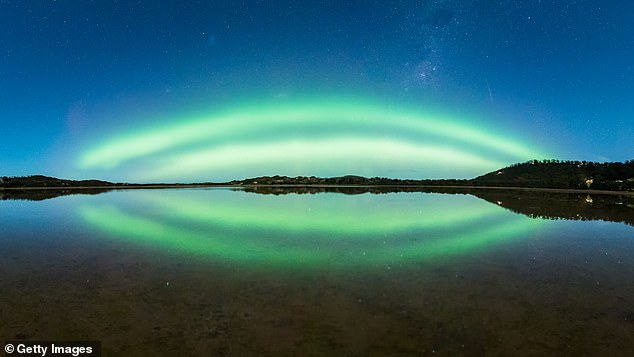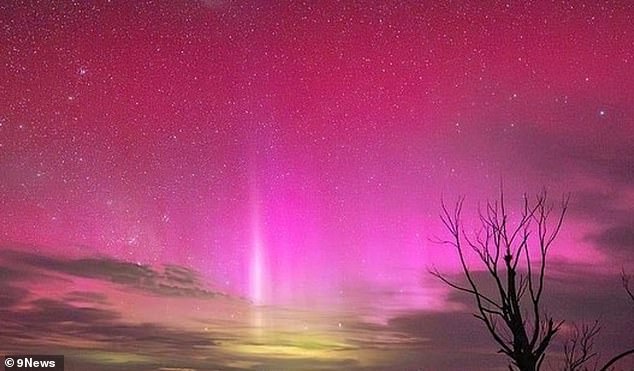Australians could once again witness a rare weather phenomenon.
Experts are closely monitoring the Sun’s increased activity, with RMIT School of Science Associate Professor Dr Brett Carter revealing that auroras could be visible on Tuesday night.
The auroras, known as the southern lights, are often visible from Tasmania.
However, May brought with it the largest geomagnetic storm in almost 20 years, offering stargazers in Victoria, South Australia and around the world prime views of this rare event.
Pink, purple and green hues lit up the sky, delighting ordinary Australians and avid stargazers alike.
Another geomagnetic storm is now expected to arrive, with peak forecast for Tuesday evening.
This could give those in southern Victoria and Western Australia the chance to see this colourful phenomenon.
“If this storm ends up being as strong as forecast, there could be a chance of visible auroras in parts of northern New South Wales and South Australia,” Professor Carter said.
Experts are closely monitoring the increased activity on the sun, with RMIT School of Science Associate Professor Dr Brett Carter revealing that auroras could be visible on Tuesday night.
The meteorological phenomenon is caused by coronal mass ejections (CMEs), which are clouds of charged particles and magnetic fields that can interact with the Earth’s magnetic field and atmosphere, causing colorful auroras.
“Since Saturday morning, both solar flares and coronal mass ejections (eruptions of solar material into space) have been observed,” Professor Carter said.
‘At least two coronal mass ejections are approaching Earth.
‘They are forecast to merge into a disturbance that is expected to arrive Tuesday morning onwards.
‘The scale of the geomagnetic storm causing these flares is expected to be at its greatest on the evening of Tuesday 30 July, giving Australians in southern parts of Victoria and Western Australia the chance to see some aurora, if conditions are right.’
It’s unclear exactly when the solar storm will hit Australia, and the likelihood of seeing an aurora is “very uncertain.”
“The biggest problem with predicting the impact of such events on Earth is that we don’t know the magnetic field inside the eruption,” Professor Carter said.
‘Disturbances in the south-facing magnetic field have significantly greater impacts than those in the north-facing magnetic field.
‘Currently, we have no reliable way to predict the magnetic field inside solar flares.’
More research is needed, as well as more data and better models to predict the space environment, Professor Carter said.

It’s unclear exactly when the solar storm will hit Australia, and the likelihood of seeing an aurora is “very uncertain.”
“There is no way to know for sure how this space weather event will play out,” he said.
‘We’ll just have to watch the data come in and see if the conditions are right for observing the aurora or not.
‘To find out if it’s worth packing up your camera gear and heading for dark, clear skies, keep an eye on space weather data coming in and out on your social media feeds.
‘People are quick to share their incredible aurora photographs online.’


